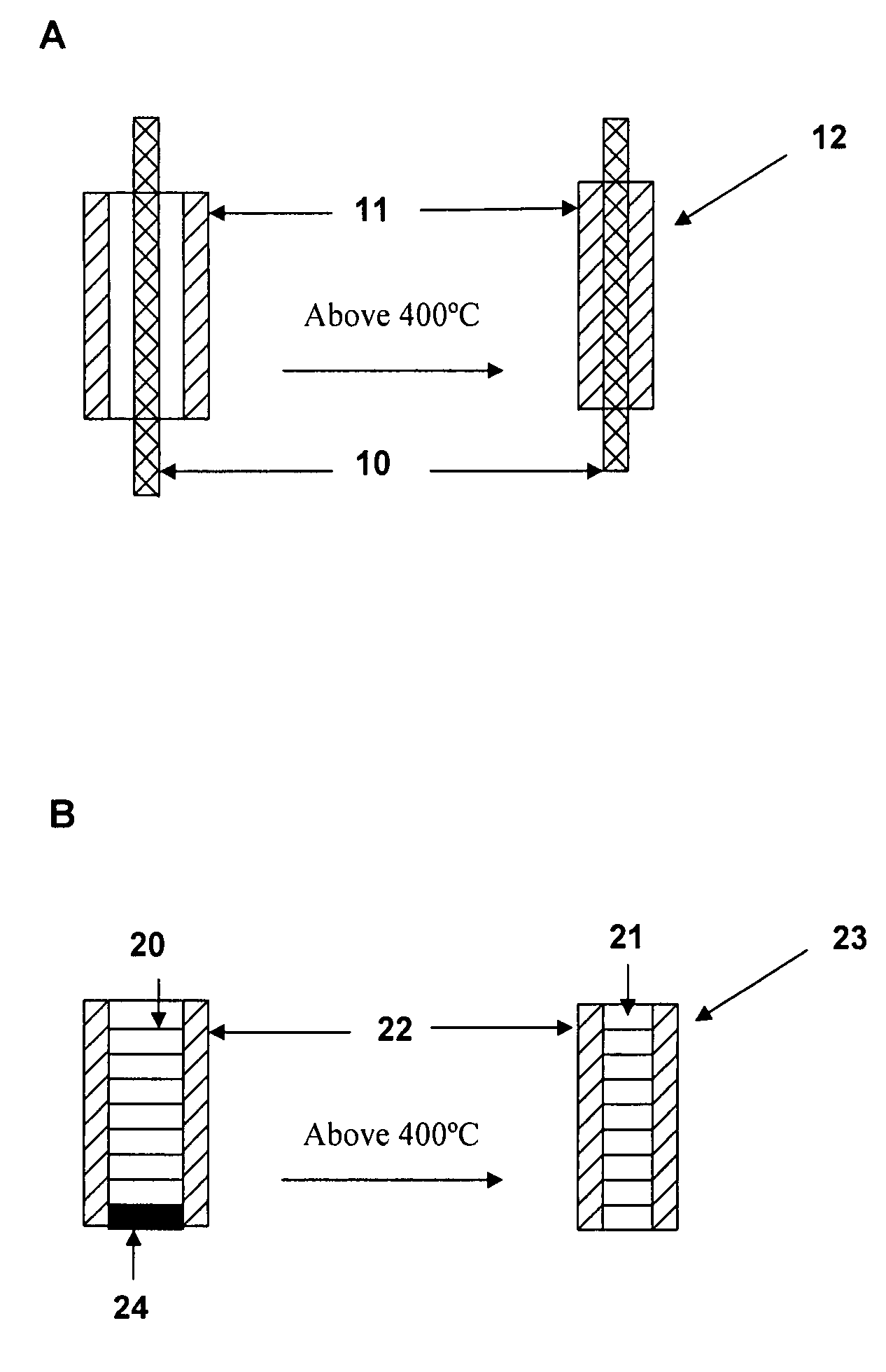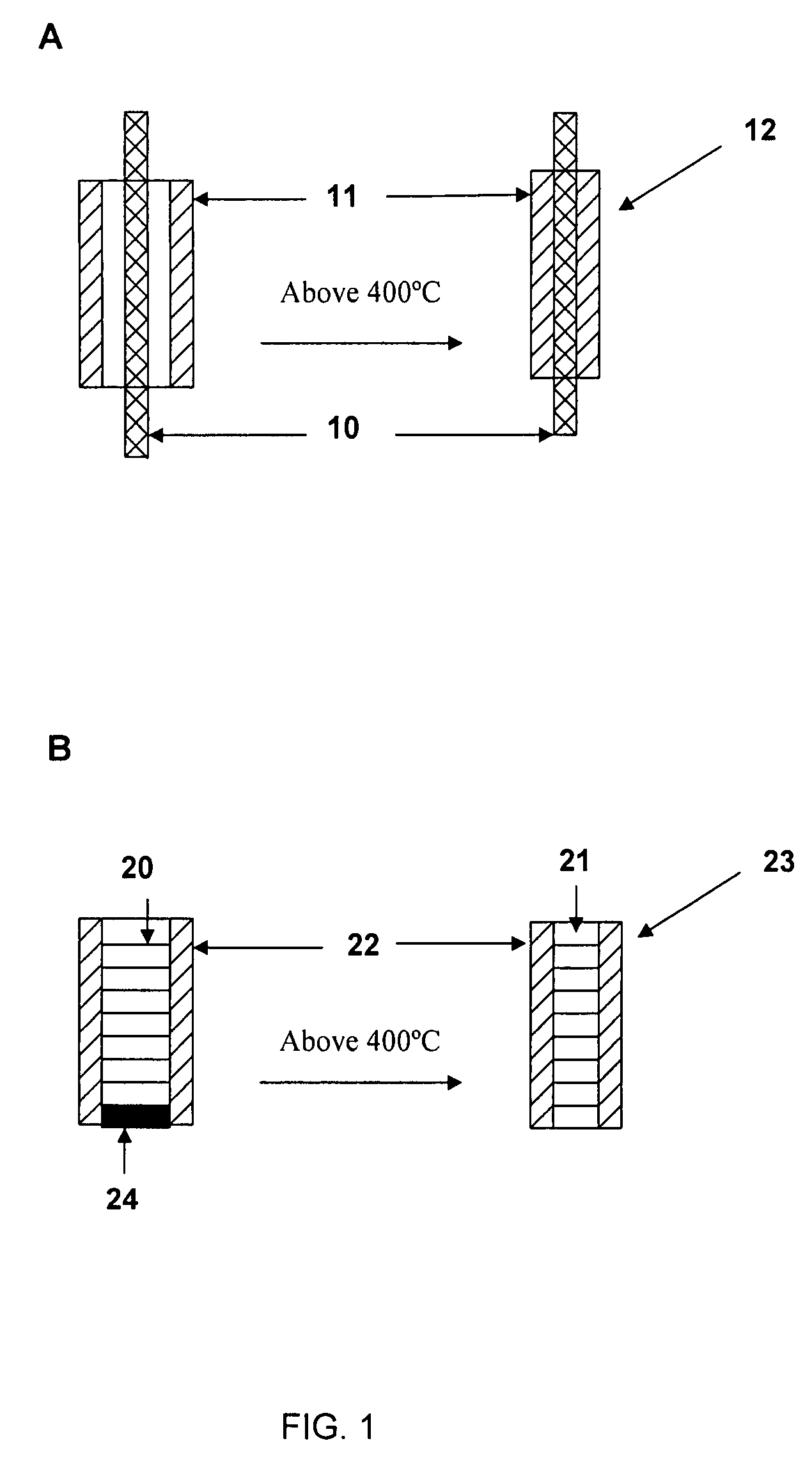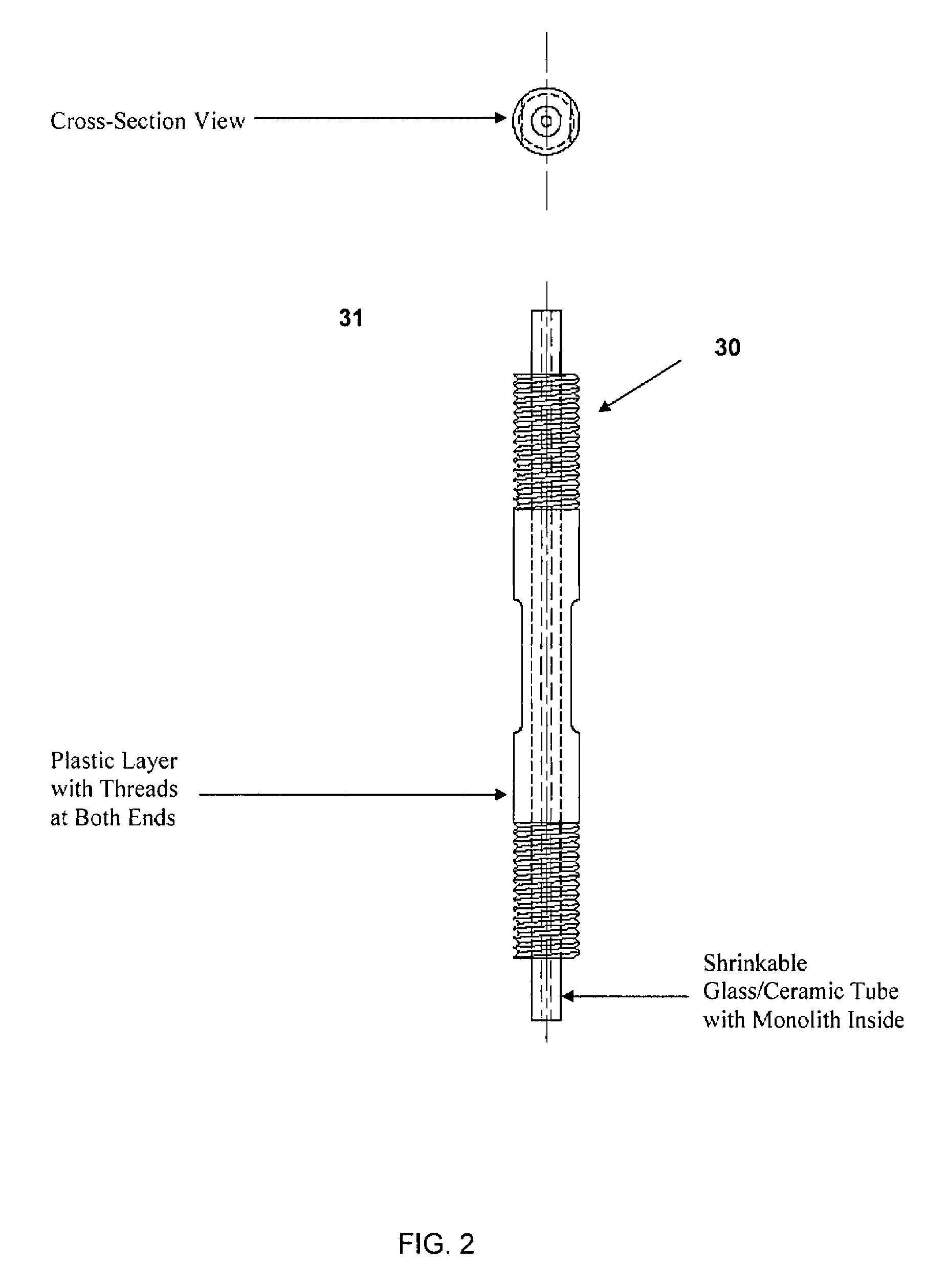Methods and devices using a shrinkable support for porous monolithic materials
a monolithic material and shrinkable technology, applied in the field of components, can solve the problems of insufficient or poorly controlled contact between the porous material, diffusion broadening of chromatographic peaks, inadequate adsorption or catalysis, etc., and achieves reduced edge effects, superior results, and greater uniformity of flow
- Summary
- Abstract
- Description
- Claims
- Application Information
AI Technical Summary
Benefits of technology
Problems solved by technology
Method used
Image
Examples
example 1
Preparation of a Porous Monolith and a Support in Liquid Tight Contact
[0132]The nonionic surfactant Pluronic F68 (0.44 g, BASF) was dissolved in a mixture of 1.1 g water, 3.6 g methanol, 2.1 g reagent alcohol and 0.96 g HF (2.6 M). While stirring, 5.0 ml tetraethoxysilane (TEOS) was introduced into the above solution and formed a uniform mixture. After 5 minutes, the sol was injected into a polymer tubing of 1.6 mm inner diameter (ID). Thirty minutes later, the sol became white gels, which were then aged, dried and transferred to a furnace for calcination at a temperature of about 550° C. overnight. Gels were removed from the tubing prior to calcination.
[0133]The final outside-diameter of the porous monolith was about 1.2 mm. BET surface area, mesopore volume and mode diameter measurements were performed using a Micromeritics TriStar 3000: the BET surface area was about 400 m2 / g, the mesopore volume was 1.1 cm3 / g, and the mesopore diameter was about 100 Å. The total pore volume was ...
example 2
Preparation of a Porous Monolith and a Support in Liquid Tight Contact
[0137]A mixture was prepared according to Example 1: the nonionic surfactant Pluronic F68 (0.44 g, BASF) was dissolved in a mixture of 1.1 g water, 3.6 g methanol, 2.1 g reagent alcohol and 0.96 g HF (2.6 M). While stirring, 5.0 ml TEOS was introduced into the above solution and formed a uniform mixture.
[0138]After 5 minutes, the sol was injected into a 2.4 mm ID glass tubing. Thirty minutes later, the sol became white gels, which were then aged, dried and calcined at a temperature of about 550° C. The silica monolith inside the glass tubing had shrunk from 2.4 mm to about 2.0 mm, and was now loose within the glass tubing.
[0139]The gel and glass tubing were then subjected to heat treatment at a temperature of 850° C. After the gel cylindrical surfaces were completely sealed, the glass column was cut into 100 mm long pieces, which were over-molded using liquid crystal polymer as described in Example 1, with both en...
example 3
Preparation of a Porous Monolith and a Support in Liquid Tight Contact
[0140]The protocol according to the Example 1 was repeated, with the following difference: one end of the borosilicate glass tubing with the porous monolith inside was sealed by melting the glass at the end of the tubing only. When the glass cooled, a vacuum (about 20 inches of mercury) was applied to the open end of the tubing, and the glass tubing with the porous monolith inside was heated to a temperature at which the glass tubing softened and shrunk under the force of the outside atmospheric pressure to form a tight seal with the silica monolith inside. Use of a vacuum allowed the shrinkage to occur at a lower temperature than in the absence of the vacuum, allowing a broader range of temperatures suitable for the shrinkage step.
PUM
| Property | Measurement | Unit |
|---|---|---|
| diameters | aaaaa | aaaaa |
| diameters | aaaaa | aaaaa |
| diameters | aaaaa | aaaaa |
Abstract
Description
Claims
Application Information
 Login to View More
Login to View More - R&D
- Intellectual Property
- Life Sciences
- Materials
- Tech Scout
- Unparalleled Data Quality
- Higher Quality Content
- 60% Fewer Hallucinations
Browse by: Latest US Patents, China's latest patents, Technical Efficacy Thesaurus, Application Domain, Technology Topic, Popular Technical Reports.
© 2025 PatSnap. All rights reserved.Legal|Privacy policy|Modern Slavery Act Transparency Statement|Sitemap|About US| Contact US: help@patsnap.com



